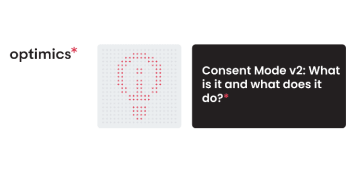
29. 10. 2023
Consent Mode v2: What is it and what does it do?
In today’s data-driven world, website owners, e-commerce businesses, and retailers rely on various tools and technologies to gather, utilize, and analyze data for targeted advertising, personalization, and enhancing customer experiences. However, with growing privacy concerns and evolving regulatory landscapes, it’s crucial to ensure users‘ consent and comply with data protection laws
First Google Consent Mode (CM) we can say “v1” emerged as a solution to effectively manage data consent and to ensure that all web owners will comply with evolving privacy regulations and users’ data will be properly managed. In November 2023, Google introduced Consent Mode v2, an enhanced version that addresses new data privacy requirements and provides greater flexibility for website owners.
The consent mode together with data privacy regulations, was primarily focused on GDPR, CCPA, LGPD, PIPEDA, and IPA in the dependence of your region of implementation and is also safeguarding users’ data against providers from third countries that are not in compliance with the aforementioned regulations.
Consent mode v2 is reacting to the DMA that was approved in July 2022 and will be applied in January 2024 and until March 2024, it will still be working on audiences and analytics.
Consent Mode v2 offers several compelling reasons for website owners to upgrade:
Enhanced Compliance: CM v2 aligns with GDPR and includes the latest data privacy regulation and DMA, which was agreed upon in July 2023 and will start to be in application in January 2024 and enforced in March 2024.
Enhanced Flexibility: CM v2 offers greater flexibility in tailoring ad experiences based on user consent preferences, enabling more personalized advertising while respecting user privacy.
To control tag behaviour, Consent Mode introduces new tag settings. analytics_storage and ad_storage are already available in v1. Additionally, in version 2, Google introduced ad_user_data and ad_personalization providing more granular control over user consent for advertising purposes with a focus on Google Ads.
analytics_storage: tags for analytic purposes either write/read or block cookies, in the case of advance mode in new consent mode, the tag is blocked but will send cookieless pings.
ad_storage: tags for advertising purposes either write/read or block cookies; in the case of advance mode in new consent mode, the tag is blocked but will send cookieless pings.
ad_user_data: controls whether user data is allowed to be sent to Google for advertising purposes
ad_personalization: controls whether personalized data (i.e.remarketing) can be enabled
Additionally, the new consent will come in two variants: basic and advanced.
Basic consent mode
Regarding the basic consent note implementations, there will be no information collected from users at all. All tags will be default-blocked unless the user grants consent.
The basic consent mode will allow continuous tracking and conversion modelling in Google ads and analytics, The modelling will be based, however, only on users who have granted consent.
Basic Consent Mode is suitable for companies that decide not to collect any data in case of cookie consent denial.
Advanced consent mode
In the case of advanced consent mode, all the relevant Google tags (GA, Floodlight, GAds, Conversion Linker) are loaded before users are presented with the consent banner. This way, Google can gather data that lacks personal identifiers such as type of device, country, time of day, and conversion type. Google is then able to extrapolate these data, basically for example: for users who use Chrome, you can see that the conversion rate is XY%, so for users who have not given consent, the conversion rate is ZX%. This helps advertisers to receive at least fully anonymized and aggregated data that would otherwise be lost. These data are very important for marketing, on which it may have a great impact, as in basic consent mode these data are not included, and modelling of marketing campaigns may have a much smaller effect as the models will be based on lower amounts of data that are crucial. The models are as effective as the data that we give them.
If you do not want to use modelled data, you cannot include it in your analytics platform.
The impact on Google products
From March 2024, advertisers that use audiences for EEA users must implement this new consent mode; otherwise, they will not be able to fill up their audience lists within products such as GA, for audiences, or legacy remarketing in Google Ads and Floodlight, and it will directly affect campaigns such as display remarketing, app campaigns for engagement, or legacy remarketing lists that are used as SE lists for new customer acquisition campaigns in 2024.
In summary
Consent mod v2 is a reaction on DMA, and you have to implement it on your website; otherwise, you will lose all of the data that you are gathering. In the case that you are using custom-made consent mode, you should develop new parameters to be in synchronisation with the moving age.
Využijte sílu*
marketingových dat k optimálnímu prodeji
Get in touch
Interested to find out the real potential* of your data?
Drop us your contact details and we will
get back to you shortly.
